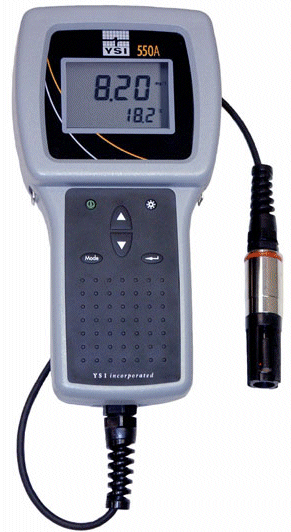 |
||
|
Dissolved Oxygen
Every animal living in the lake needs dissolved oxygen in order to breathe, or respire. That is why scientists keep a close eye on the level of dissolved oxygen in the lake using dissolved oxygen probes. These probes have specialized receptors that record a measurement every time an oxygen molecule passes through the membrane and comes in contact with the receptor. The deep, hypolimnion layer, becomes anoxic during certain times of the year meaning that the bacteria at the bottom of the lake use up all of the oxygen. This can cause fish kills during the winter, when the lake is covered with ice. The layer of ice blocks the transport of oxygen from the atmosphere to the water. The epilimion, or top layer, can become supersaturated. This means that the water in that layer can hold more oxygen than usual. If you see a value of more than 100% for Dissolved Oxygen in this dataset, it means that the water is supersaturated. The middle layer, or metalimnion, is usually under-saturated, meaning that there is less oxygen present than it is capable of having. The middle layer has less oxygen than the top layer because it lacks the influence of wind; it pushes oxygen into the water. Plants play a critical role in pumping oxygen back into the water through photosynthesis. 
|

